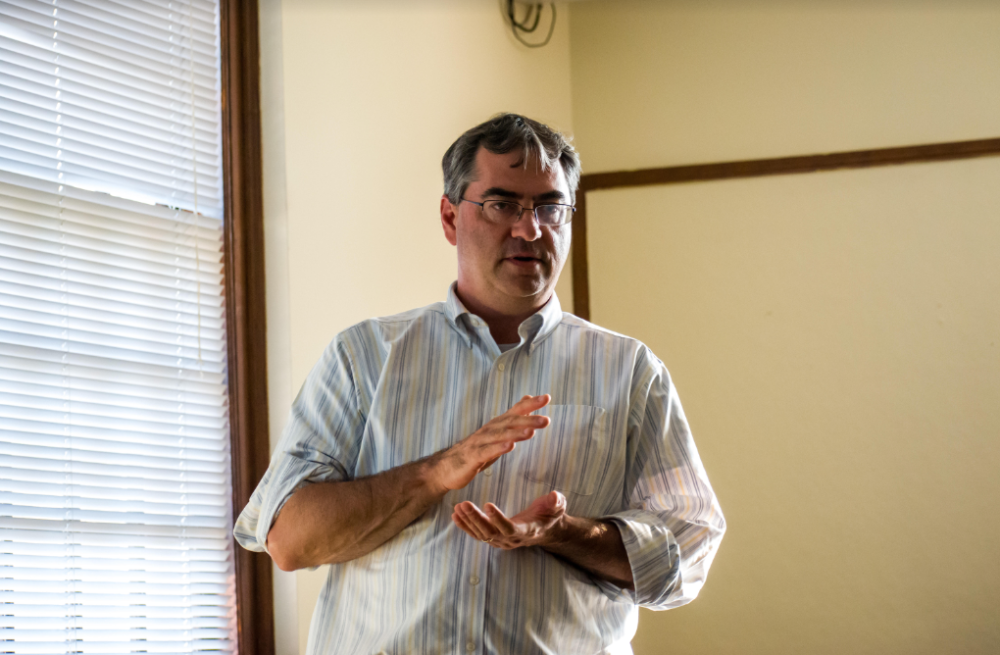Sewer Commission, consultants address questions about $36 million project
Residents voiced concerns about the financial and planning aspects of the $36 million sewage treatment facility project at the informational session held by the Sewer Commission and its GHD consultants Thursday, July 20.
If approved at the Special Town Meeting on Monday, July 24, the Sewer Commission would have authorization to borrow $36 million to purchase new equipment for the treatment facility.
The Sewer Commission and outside consultants have argued that replacement of parts of the “headworks” and “clarifier” — dealing with sewage at the beginning and end of the treatment process — are reaching the end of their useful life and that replacing them is critical to keeping the plant functioning.
Marc Drainville of consulting at GHD gave a short presentation on what the project includes, how it would be paid for and some history of the plant.
Drainville said multiple reports dating back years have indicated the need to replace this equipment.
When asked why these problems were not initially addressed or planned for, Drainville said funding has been a main factor.
He said this project was submitted to the state to see if it qualifies as a “high priority” item for the State Revolving Fund Loan using a report from 2021.
In August 2022, the state recognized this project as necessary, but in order to obtain the loan, the town needs to complete the required steps.
Getting borrowing approval is the next step, he added. If the town turns down the request at the Special Town Meeting, this opportunity may be missed and the state may seek another town to fund instead.
If taken off the priority list this year, qualifying next year may be trickier, Drainville said.
“What's important can change year to year,” he said, “and they're already telling towns that next year there are going to be slightly different priorities.”
Drainville said if the town borrows this money from the state, they would qualify for approximately 10% principal forgiveness, which essentially means grant funding. There would be zero to 2% interest on this loan.
There would also be an approximately 17% contribution from Bourne through an intermunicipal agreement, he said.
This leaves approximately $27 million that the Sewer Department would need to begin paying back when the project is completed, Drainville added. This is anticipated to be in 2027.
Therefore the estimated $80 to $100 increase to user fees would not go into effect until then, he said.
A resident inquired about the timeline of the Wastewater Management Plan.
Drainville said a plan of this nature is a long process as there is a public component to it.
The team of Sewer Commissioners, consultants and engineers working on the plan meet with various town boards and are “looking at the end of this year to have a draft plan. It's not going to be 100% done, but hopefully a draft plan for a kind of public contribution — public review.”
Drainville added this plan will include what the town needs to do to address nitrogen contamination issues that are a result of septic systems in concentrated areas.
It will also include how the wastewater treatment facility will accommodate for growth in the town for the next 20 years.
“It's likely that the implementation would probably be a phased approach of addressing these needs,” Drainville said.
Carl Schulz, who is a member of the Planning Board, but speaking as a private citizen, said, “This problem hasn't snuck up on us. This problem has been growing for years and it's not a surprise.”
Schulz asked, “What I want to know is OK, we authorized this $36 million, what's going to change in the way we manage the operation?”
Sewer Commission Chair Bernie Pigeon said the commission and Sewer Department need to follow guidelines that require them to obtain approval at town meetings to move forward with projects like this.
“It's a political environment,” Pigeon added. “There's a lot of grants available, loans available, etcetera and it depends on what the leaders determine needs to be done.”
He added this project cannot be solely funded by ratepayers and therefore it is “dependent very much on the available monies, too.”















